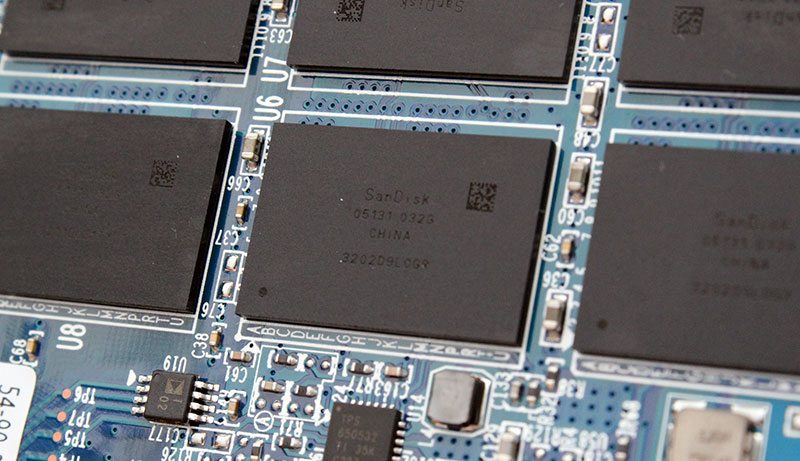Sandisk X210 256GB Business Class Solid State Drive Review
Chris Hadley / 11 years ago
A Closer Look
Like many consumer level drives, the X210 is built into a 7mm thick case, making compatibility with business class laptops that much greater and when we comes down to the point of style, there is not really that much to look at. An all black case is topped with a black sticker on the top that shows nothing more than the brand and model of the drive. Brushed metal effect drives and fancy designs are a waste of time and money at this level.
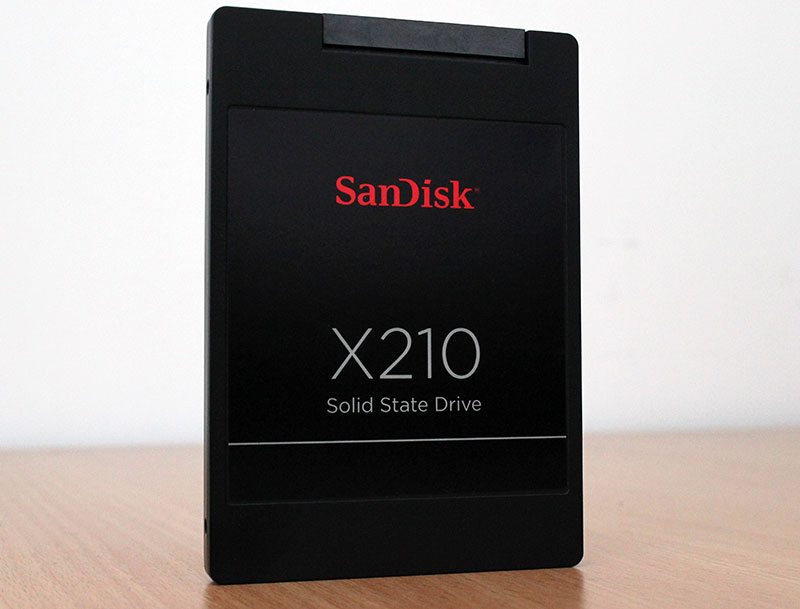
On the underside of the drive we find an additional sticker which displays the same variety of information as we would expect to see on any solid state drive with regulatory information, the model name and serial number and lets not forget the all important capacity – in this case a healthy 256GB of unformatted space to play around with.
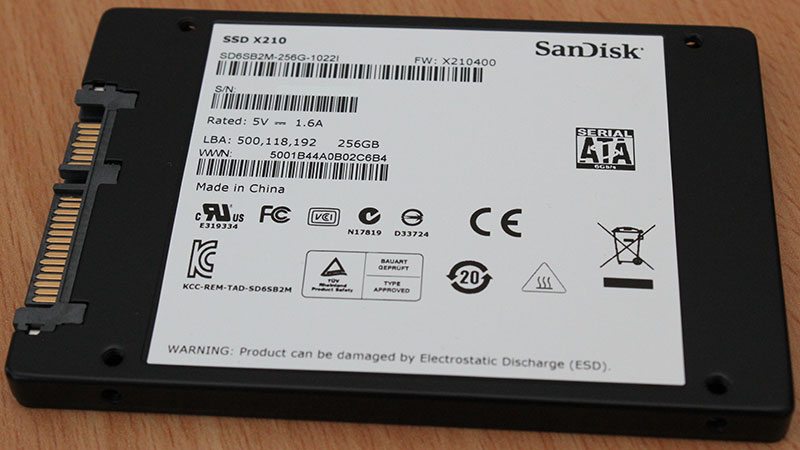
Breaking the warranty seal open and delving inside the drive to take a look around, we see that the drive casing is made up of two materials. A light weight lid accompanies a metal tray which acts as a heat spreader for all the major components, including the NAND packages and DRAM.
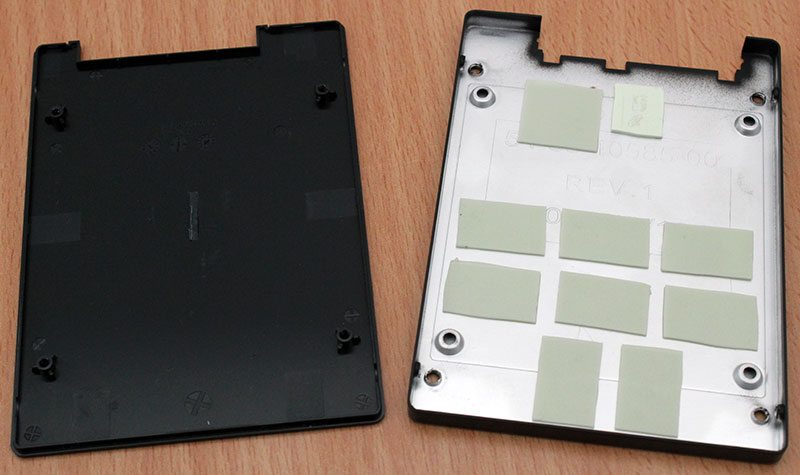
Like a few SSDs that I’ve seen over the last 18 months, the X210 utilises only one side of the PCB, and whilst this may not seem too significant in any way, you have to consider that using both sides of the board requires more manufacturing processes and time, which will nudge the overall price of the drive up a little. In a world where multiple drives are likely to be bought, this little saving on one drive can soon add up to a much larger saving on a larger deployment.
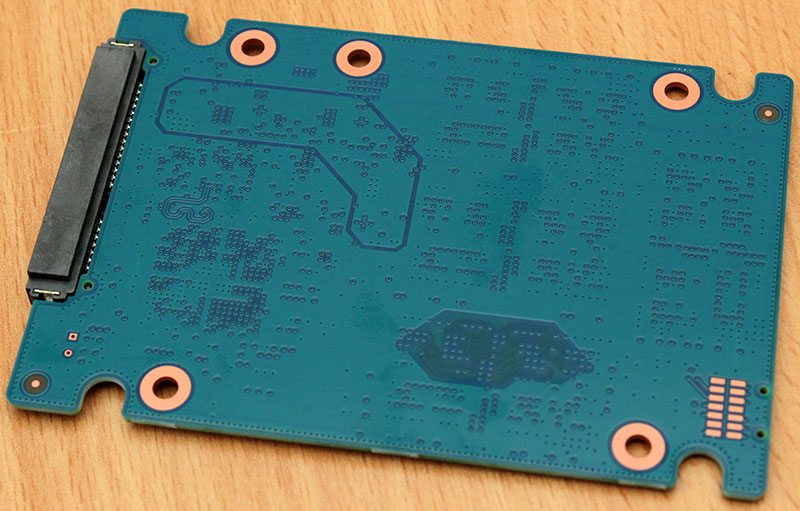
On the business side of the PCB, the layout is remarkably similar to that of the Extreme II which I looked at previously and bar some alterations to the smaller, minor components, all the NAND packages, controller and DRAM are placed in virtually the same positions as we have seen before.
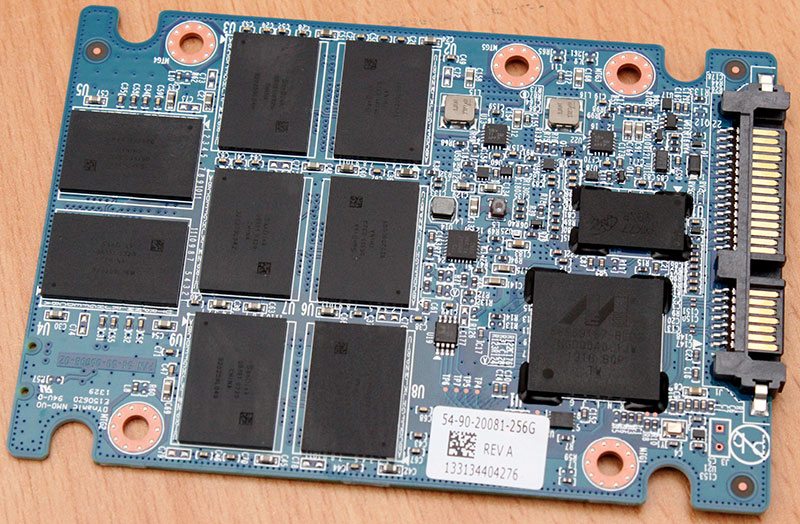
As highlighted on the first page of this review, the X210’s controller is the same 88SS9187-BLD2 ‘Monet’ package from Marvell as seen on the Extreme II. I will once again point out that Sandisk have major some crucial alterations to the firmware on this controller to bring up the level of reliability and longevity of deployment in a trade-off for some top end performance levels. Above the controller, a smaller Micron MK77-333 package gives the drive 256MB of DDR3 DRAM. The 128GB and 512GB models have 128MB and 513MB of DRAM respectively.
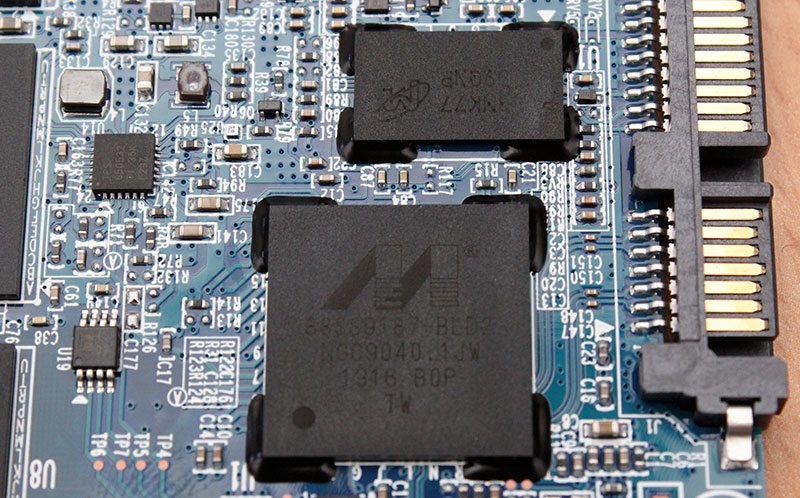
Like every other Sandisk SSD, the NAND packages are produced in-house and in the case of the 256GB drive we are presented with eight 19nm MLC NAND packages, each with its own separate nCache for consolidating a large number of small write operations into one single large write operation on the MLC NAND part of the package.
